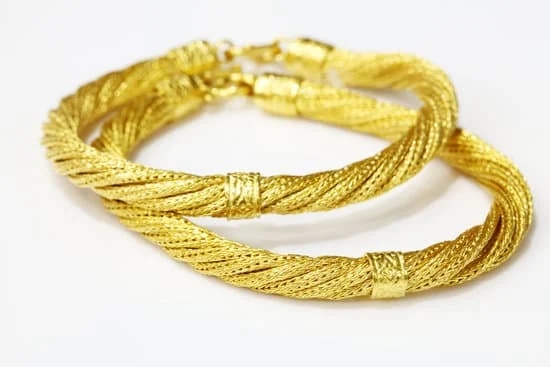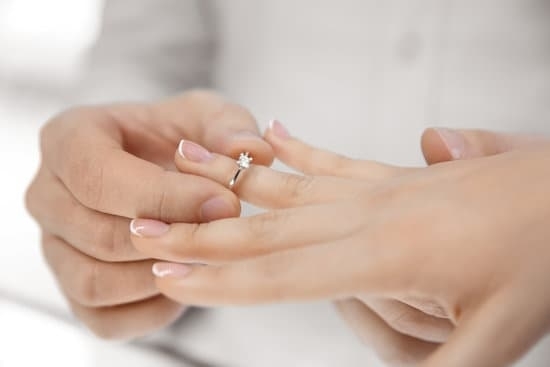Knowing how to remove diamonds from your gold jewelry is a valuable skill that every jewelry owner should possess. Diamonds hold not only monetary value but also sentimental attachment, making it crucial to handle them with care when repairs or repurposing are needed. Whether you want to resize a ring, redesign a pendant, or simply clean your precious gems, understanding the proper techniques for diamond removal is essential.
Gold jewelry adorned with diamonds often holds a special place in our hearts. These shimmering gemstones symbolize love, commitment, and cherished memories. However, situations may arise where you need to take off the diamonds temporarily for various reasons. Whether it’s a broken prong, an outdated setting, or a desire to create an entirely new piece while preserving the diamonds’ beauty, knowing how to safely detach these precious stones from their settings is indispensable.
Safety should be the utmost priority during the diamond removal process. Using the right tools and equipment is crucial to prevent any damage that could occur to both the diamonds and the jewelry itself.
By following proper guidelines and taking precautions, you can save yourself from unnecessary risks and ensure successful diamond removal without compromising their brilliance and integrity. In the upcoming sections of this article, we will delve into safety measures as well as provide a step-by-step guide on how to effectively remove diamonds from different types of gold jewelry settings.
Safety Precautions
Removing diamonds from gold jewelry can be a delicate process that requires utmost care and attention. To ensure a successful removal without any damage, it is crucial to prioritize safety throughout the entire process. By following proper safety precautions, you can protect both the diamonds and the jewelry itself.
First and foremost, it is vital to use the right tools and equipment for diamond removal. One essential tool is a pair of tweezers with delicate tips to handle the diamonds with precision. Additionally, a jeweler’s loupe can provide magnification and help you see small details while working on intricate jewelry pieces. Diamond tweezers are another valuable tool that allows for a secure grip on the diamonds during removal.
When selecting these tools, prioritize high-quality options to ensure efficiency and accuracy. For example, choose tweezers made of materials like stainless steel or titanium for durability and stability. Opt for a jeweler’s loupe with good clarity and adjustable focus for clear visibility. Diamond tweezers should have smooth tips that won’t scratch or damage the stones.
While working with sharp tools, such as tweezers or diamond tweezers, it is important to take caution to prevent injury. Always wear protective gloves to safeguard your hands against potential cuts or punctures from sharp edges of the jewelry or prongs. Additionally, make sure your work area is well-lit so that you can clearly see what you are doing, reducing the risk of accidents.
Another safety consideration during diamond removal is preventing any damage to the jewelry itself. Before starting the removal process, it is advisable to determine whether there are any loose stones or fragile parts in need of repair before proceeding further. By ensuring that all other repairs are taken care of beforehand, you lower the risk of causing unintended harm while removing diamonds.
By prioritizing safety throughout the diamond removal process, you can successfully remove diamonds from gold jewelry without any damage or accidents. Taking precautions to choose the right tools, wear protective gloves, and work in a well-lit area can significantly reduce the risk of injury.
Additionally, addressing any pre-existing damages or loose stones before removal helps preserve the overall integrity of the jewelry. With these safety measures in place, you can confidently proceed with removing diamonds from your gold jewelry.
Gathering the Essential Tools
Introduction
Before attempting to remove diamonds from gold jewelry, it is crucial to gather the essential tools that will aid in the process. These tools are necessary for ensuring a safe and efficient removal, minimizing the risk of damage to the diamonds or the jewelry piece itself. By having the right tools at hand, you can confidently proceed with removing diamonds and unlock their potential for repair or repurposing.
List of Essential Tools
- Tweezers: A fine-tipped pair of tweezers is necessary for delicately handling the diamonds during the removal process. It allows for precise control and minimizes the risk of dropping or damaging the stones.
- Jewelers’ Loupe: This magnifying tool helps examine the jewelry closely, enabling a clear view of the diamond’s setting and any potential obstructions that need to be addressed before removal.
- Diamond Tweezers: Specifically designed for handling gemstones, diamond tweezers have precision tips that securely grip and hold onto diamonds during removal. These tweezers help avoid unnecessary pressure on delicate stones.
- Safety Glasses: Protecting your eyes during any jewelry repair process is crucial. Safety glasses shield your eyes from flying debris or accidental contact with a tool, ensuring both your safety and clarity of vision.
- Soft Cloth: Providing a soft surface to place your jewelry on during removal prevents scratches or other damage to its surface.
- Non-Slip Work Surface Mat: This mat ensures stability while working, preventing movement or slipping of your jewelry piece as you handle it.
- Protective Gloves: Wearing gloves when handling jewelry protects both yourself and your pieces from oils and dirt transfer that could potentially affect their appearance or value.
Tips for Selecting High-Quality Tools
To ensure efficiency and accuracy when removing diamonds from gold jewelry, it is vital to invest in high-quality tools. Here are a few tips for selecting the right ones:
- Research and read reviews: Before purchasing any tool, take the time to research different brands and read customer reviews. Look for reputable manufacturers known for producing reliable jewelry tools.
- Seek recommendations: Consult with fellow jewelry enthusiasts or professionals for recommendations on trusted brands and suppliers.
- Consider durability: Look for tools made from durable materials like stainless steel or titanium, ensuring they will withstand frequent use without bending or breaking.
- Opt for precision: Choose tools that offer precise control and a comfortable grip, as this will greatly enhance your ability to handle delicate diamonds.
- Check warranties and return policies: Verify if the manufacturer offers warranties or return policies that provide peace of mind in case of defects or quality issues with your purchased tools.
By gathering these essential tools and investing in high-quality equipment, you can proceed confidently with removing diamonds from gold jewelry, ensuring success while keeping both the stones and the jewelry piece safe from harm.
Step-by-Step Guide
Step 1: Assessing the jewelry and identifying the setting type
Before you begin removing diamonds from your gold jewelry, it is crucial to assess the piece and determine its setting type. Different settings require specific techniques for safe removal. Take a close look at the jewelry and identify whether it has prong settings, bezel settings, or another common setting. This initial step ensures that you proceed with the appropriate method and tools for a successful removal process.
Step 2: Cleaning the jewelry to ensure a clear view of the diamonds
Next, it’s important to thoroughly clean your gold jewelry to provide a clear view of the diamonds. Use a mild solution of warm water and gentle dish soap, along with a soft-bristled brush, to remove any dirt or debris around the diamonds and in the setting. Be careful not to scrub too vigorously, as this could loosen or damage the diamonds. Gently rinse the jewelry under running water and pat it dry with a clean, lint-free cloth.
Step 3: Safely loosening the prongs or removing the bezel to access the diamonds
Once your gold jewelry is clean and dry, it’s time to safely loosen the prongs or remove the bezel holding the diamonds in place. For prong settings, use jeweler’s pliers or tweezers specifically designed for this task. Firmly grasp one prong at a time while gently pushing it away from the diamond until all prongs are slightly loose.
Alternatively, if your jewelry has a bezel setting, carefully insert a jeweler’s knife between the edge of the bezel and gold base. Gently lift up to separate them without putting unnecessary pressure on any diamond.
Step 4: Using appropriate tool to gently lift diamond from its setting
With your jewelry prepared, use an appropriate tool to gently lift the diamond from its setting. Diamond tweezers are highly recommended for their precision and non-slip grip. Place the tips of the tweezers on the sides or top of the diamond, depending on its shape and size, and exert a gentle upward pressure until it comes free from the setting. Take your time and be patient during this step to avoid accidental damage.
Step 5: Securing the removed diamonds for further use or storage
Lastly, once you have successfully removed the diamonds from your gold jewelry, it’s essential to secure them properly for further use or storage. Place each diamond separately in a soft cloth or small container to prevent scratching and store them in a safe location. If you plan to use these diamonds for a different piece of jewelry, consult with a professional jeweler to ensure they are appropriately mounted.
By following this step-by-step guide, you can confidently remove diamonds from your gold jewelry without causing any harm. Remember to exercise caution, patience, and always prioritize safety throughout this process.
Handling Different Types of Settings
When it comes to removing diamonds from gold jewelry, it is important to understand that different types of settings require different techniques. Each setting has its own unique characteristics and challenges, so knowing how to handle them properly is essential to avoid damaging either the diamonds or the jewelry. In this section, we will explore some common jewelry settings and discuss the appropriate removal techniques for each.
One of the most popular settings for diamond jewelry is the prong setting. This setting involves small metal prongs that securely hold the diamond in place. To remove diamonds from a prong setting, you will need to carefully bend or lift the prongs using a pair of tweezers or diamond tweezers. It is crucial to exercise caution during this process to prevent accidentally bending or breaking the prongs.
Another common setting is the bezel setting, which completely surrounds the diamond with a thin strip of metal. To remove diamonds from a bezel setting, you will first need to use a jeweler’s loupe or magnifying glass to examine how the bezel is holding the diamond in place.
Depending on whether it is a fully closed bezel or an open-backed one, you can either gently pry open the bezel using a small flathead screwdriver or carefully lift one end of it using tweezers.
Other less common settings include channel settings and pave settings. Channel settings are often found in wedding bands or eternity rings and involve placing diamonds side by side within a metal channel. Removing diamonds from channel settings may require specialized tools such as jewelers’ pliers or needle-nose pliers to carefully extract them without causing any damage.
Pave settings, on the other hand, feature numerous tiny diamonds set closely together within small holes drilled into the metal surface. When working with pave-set diamonds, it is crucial not to apply too much pressure as they can easily become dislodged or damaged. Using a diamond tweezers or a specialized setting tool can help ensure a secure and safe removal.
It is important to note that the techniques described above are general guidelines, and the specific removal process may vary depending on the design and craftsmanship of the jewelry. If you are uncertain about the best approach for removing diamonds from your particular piece of jewelry, it is always advisable to consult with a professional jeweler who can provide expert guidance and assistance. They have the knowledge and experience to handle various settings and delicate jewelry without risking any damage.
By understanding how different settings work and the appropriate techniques for each, you can confidently remove diamonds from your gold jewelry without compromising their integrity. Always take your time, exercise patience, and make sure to prioritize safety throughout the removal process.
Troubleshooting and Overcoming Challenges
Removing diamonds from gold jewelry can sometimes pose challenges, even for experienced individuals. Knowing how to troubleshoot and overcome these difficulties can help ensure a successful diamond removal process. Here are some common issues you may encounter and solutions to overcome them:
1. Stubborn or Stuck Diamonds:
Sometimes, diamonds can get stuck or become stubbornly attached to their settings. In such cases, applying a small amount of heat to the setting using a jeweler’s torch can help loosen it. Be sure to use caution when applying heat, as excessive heat may damage the jewelry.
2. Handling Delicate or Fragile Jewelry:
Delicate or fragile jewelry requires extra care during the diamond removal process. To prevent damage, consider using softer tools, such as plastic tweezers or wooden picks, instead of metal ones. Additionally, if you encounter any resistance while removing the diamond, it is important to stop immediately and seek professional assistance to avoid causing harm.
3. Preventing Damage to Other Stones:
In jewelry pieces with multiple stones, there is a risk of accidentally damaging or dislodging other stones while removing diamonds. To avoid this problem, exercise caution and consider using additional protection measures like soft cloth padding or rubber tips on your tools. Take your time and work slowly and patiently to minimize the chance of any accidents.
4. Dealing with Tight Prongs:
Tight prongs can make it challenging to access the diamond for removal. In such cases, you will need to gently loosen the prongs before proceeding further. Using a jeweler’s pliers specifically designed for prong manipulation can help you achieve this without causing any damage.
By being aware of these potential challenges and knowing how to address them effectively, you can enhance your chances of successfully removing diamonds from gold jewelry without any mishaps along the way. Remember that if you are unsure about anything or encounter significant difficulties, it is always best to seek professional assistance from a reputable jeweler.
Post-Removal Care and Cleaning
After successfully removing diamonds from gold jewelry, it is crucial to give proper care and attention to the jewelry to maintain its brilliance and sparkle. Post-removal care involves cleaning the jewelry and storing the removed diamonds securely.
Cleaning the jewelry after diamond removal helps restore its shine and removes any residues or dirt that may have accumulated during the removal process. One effective method for cleaning is to create a gentle solution using warm water and mild dish soap. Gently scrub the jewelry with a soft-bristled brush, paying extra attention to crevices and hard-to-reach areas where dirt can accumulate.
Rinse thoroughly with clean water and dry gently with a soft cloth. It is important to note that certain types of gemstones or delicate pieces may require specific cleaning methods, so it is advisable to consult a jeweler or expert for guidance.
Storing the removed diamonds properly is equally important to ensure their safety and prevent damage. It is recommended to store diamonds in individual compartments of a jewelry box or in separate protective cases specifically designed for gemstones. This helps protect them from scratches, dust, and other potential hazards.
Alternatively, small drawstring bags made of soft fabric can also be used for storage. Remember to label each compartment or bag with relevant details such as diamond size, shape, and color for easy identification in the future.
Proper care after diamond removal not only preserves the quality of the jewelry itself but also allows for future repurposing or replacement of diamonds while maintaining their value. By following these post-removal care guidelines, individuals can ensure that their gold jewelry remains exquisite and keeps their memories intact.
| Post-Removal Care Steps | Additional Information |
|---|---|
| Clean the jewelry | Create a solution using warm water and mild dish soap |
| Store the removed diamonds | Individual compartments, protective cases, or drawstring bags can be used for storage |
Professional Assistance
While removing diamonds from gold jewelry can be done by individuals with the right knowledge and tools, there are instances where it is best to seek professional assistance. Consulting a jeweler or expert ensures that the diamonds are safely and properly removed without causing any damage to the jewelry or the precious stones. Here are some situations where you should consider seeking professional help:
- Complex or Intricate Settings: If your jewelry has complex settings, such as pave or channel settings, it is advisable to let a professional handle the diamond removal process. These intricate settings require specialized techniques and tools that may be beyond the average person’s skill set. A knowledgeable jeweler will have the expertise to remove the diamonds carefully without compromising their integrity.
- Valuable or Sentimental Jewelry: Jewelry pieces that hold high monetary value or sentimental significance should be entrusted to professionals for diamond removal. This includes heirloom pieces, antique jewelry, and expensive designer pieces. Professionals have the necessary experience and precision to handle valuable jewelry with care, minimizing the risk of damage during the removal process.
- Lack of Experience: If you do not feel confident in your ability to remove diamonds yourself, it is always better to err on the side of caution and consult a professional. Removing diamonds requires patience, skills, and knowledge of various jewelry settings. By relying on an expert, you can avoid potential mistakes that could lead to irreversible damage.
When choosing a jeweler for diamond removal services, it is important to consider their reputation and expertise in handling delicate gemstones like diamonds. Look for jewelers who specialize in repairs and have experience working with different types of settings. Additionally, it is beneficial to inquire about their insurance policies concerning potential damages during the removal process.
Consulting a professional not only ensures a safe and successful diamond removal but also offers peace of mind knowing that your precious jewelry is in capable hands. However, if you are determined to remove the diamonds yourself, make sure to educate yourself thoroughly, gather the necessary tools, and exercise caution throughout the process.
Conclusion
In conclusion, knowing how to remove diamonds from gold jewelry is a valuable skill for anyone who wants to preserve the sentimental or monetary value of their jewelry. Throughout this article, we have discussed the importance of safety precautions and selecting the right tools for the task. We have also provided a step-by-step guide on how to remove diamonds, emphasizing the need for careful assessment and cleaning of the jewelry before beginning the process.
Handling different types of settings requires specific techniques and precautions to avoid damage, as explored in this article. Troubleshooting potential challenges such as stubborn or delicate diamonds is essential, and post-removal care and cleaning play a crucial role in maintaining the brilliance of both the jewelry and the removed diamonds.
While DIY diamond removal can be successfully achieved with caution and patience, it is important to recognize when professional assistance is necessary. Seeking help from a reputable jeweler ensures safe and reliable removal services, especially in complex situations or for valuable pieces.
In summary, removing diamonds from gold jewelry involves assessing the setting type, safely loosening prongs or bezels, gently lifting the diamond from its setting, and securing it for further use or storage. By following these steps, exercising caution throughout the process, and consulting experts when needed, readers can successfully remove diamonds from their jewelry while preserving their value. Remember to always handle precious items with care and seek professional help if unsure about any aspect of diamond removal.
Frequently Asked Questions
How do you remove diamonds from jewelry?
To remove diamonds from jewelry, it is important to exercise caution and preferably seek the assistance of a professional jeweler. The first step usually involves inspecting the setting to determine the type of setting holding the diamond in place. In some cases, prongs or claws may have to be carefully lifted using specialized tools.
This allows for safe removal of the diamond without causing damage to the surrounding jewelry. Alternatively, if the diamond is set using tension or pressure techniques, a jeweler may use a laser to carefully heat and expand the metal setting, thus freeing the diamond without compromising its integrity.
How do you remove stones from gold jewelry?
When it comes to removing stones from gold jewelry, it depends on the specific technique used to secure them in place. Generally, prong settings are commonly encountered with gemstones in gold jewelry pieces.
To remove stones from prong settings (which typically feature small metal prongs holding each stone), jewelers often employ tweezers or specialized pliers designed for this purpose. By applying gentle pressure or bending the prongs back into their original position, they can release and safely remove the stones one by one.
Can a jeweler remove diamonds?
Yes, professional jewelers are generally skilled in removing diamonds from jewelry settings. They possess both knowledge and experience in handling precious gemstones carefully.
Depending on various factors such as setting type and complexity, a jeweler will choose an appropriate approach for removing diamonds safely without causing any harm to either the diamond or surrounding metalwork. Their expertise ensures that diamonds can be removed efficiently while preserving their value and structural integrity.

Welcome to my jewelry blog! My name is Sarah and I am the owner of this blog.
I love making jewelry and sharing my creations with others.
So whether you’re someone who loves wearing jewelry yourself or simply enjoys learning about it, be sure to check out my blog for insightful posts on everything related to this exciting topic!





